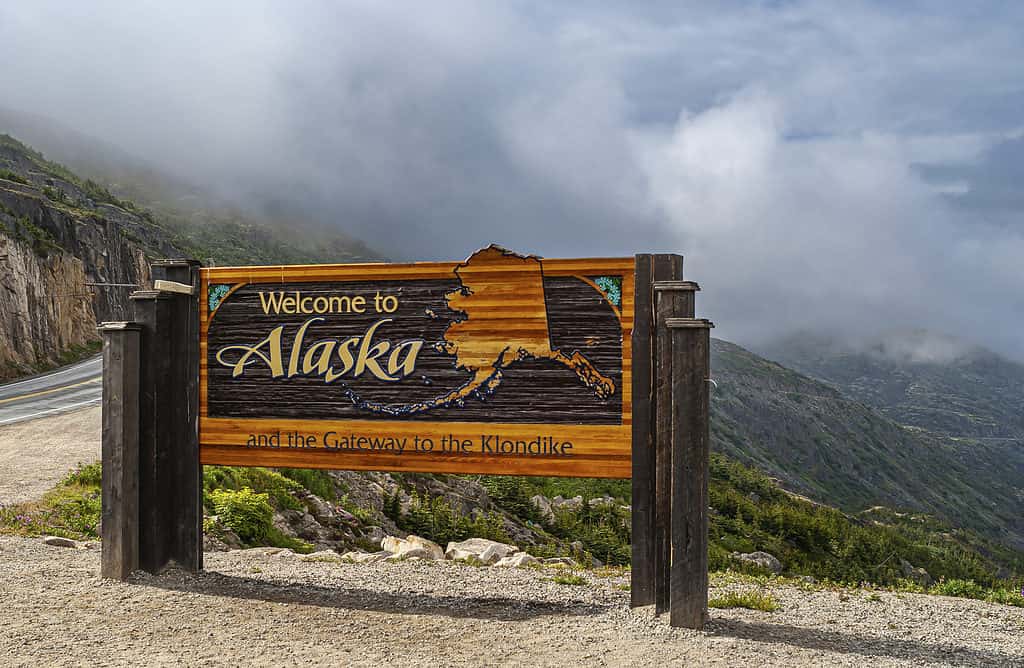Alaska is a large state full of vast wilderness, rugged natural beauty, diverse wildlife, glaciers, northern lights, and a long coastline. It’s two and a half times larger than Texas and bigger than California, Texas, and Montana put together. But who owns all of that land? Read on to meet the number one largest landowner in Alaska.

The U.S. federal government owns 223 million acres in Alaska.
©iStock.com/ClaudineVM
Who is the Largest Landowner in Alaska?
The largest landowner in Alaska is the U.S. federal government. The federal government owns 223 million acres or nearly 61% of the land in Alaska. The government-owned land is public land and includes national parks, forests, and wildlife refuges.
After the federal government, the second largest landowner is the state of Alaska, owning around a quarter of the land. Local Native corporations own another 10% from the Alaska Native Claims Settlement Act of 1971. The remaining land is divided among private owners.
How Does the Federal Government Manage the Land in Alaska?
Alaska is the fourth state with the most land owned by the federal government. Overall, the federal government owns 650 million acres of land in the United States or about 30% of the country. Various governmental divisions maintain and manage America’s land.
In Alaska, the Bureau of Land Management maintains roughly 32% of federally owned lands. Next, the Fish and Wildlife Service manages about 34%. They are responsible for protecting endangered species and wildlife refuges. The National Park Service manages about 23% of the land, and the Forest Service controls around 10%. Finally, the remaining land (under 1%) is controlled by the Department of Defense.
How Did the Government End up Owning So Much Land?
It’s not just Alaska where the majority of the land is owned by the government. It’s the same in other western states, including Oregon, Utah, and Nevada. As the country expanded west and territories became states, the government purchased or took land from groups such as the Native Americans. In Alaska, the government bought the land from Russia for $7.2 million in 1867, however, Alaska didn’t become a state until 1959.

The U.S. federal government owns much of Alaska’s wild and untamed mountainous land.
©Art Wolfe/ via Getty Images
In the lower 48 states, the government transferred much of the land to states or homesteaders. However, in rugged places such as Alaska, the rough and difficult-to-reach mountainous and frigid land was not desired by farmers or ranchers. Settlers chose land that was easier to tame and built cities. This left much of the wilderness in Alaska to be owned by the federal government.
The government turned some of the land into federal parks and wildlife refuges, saving it for conservation. Today, ranchers and mining companies lease great swaths of land from the government for a cheaper rate than if they owned it. They graze cattle and mine for minerals and ores in the lands that they lease.
National Parks in Alaska

Alaska’s Wrangell-St. Elias National Park and Preserve is the nation’s largest national park.
©BlueBarronPhoto/Shutterstock.com
Alaska is home to 15 national parks and preserves. Furthermore, the government protects 13 national wild rivers running through Alaska. Within this wilderness, there is a diverse amount of wildlife and ecosystems.
The biggest national park in the nation is located in Alaska—the Wrangell-St. Elias National Park & Preserve is 13.2 million acres and is home to grizzly bears, black bears, wolves, foxes, lynx, beavers, and river otters. Along the coastline roam harbor seals, sea otters, and sea lions, while harbor porpoises and whales swim off the coast.
The photo featured at the top of this post is © hyotographics/Shutterstock.com
